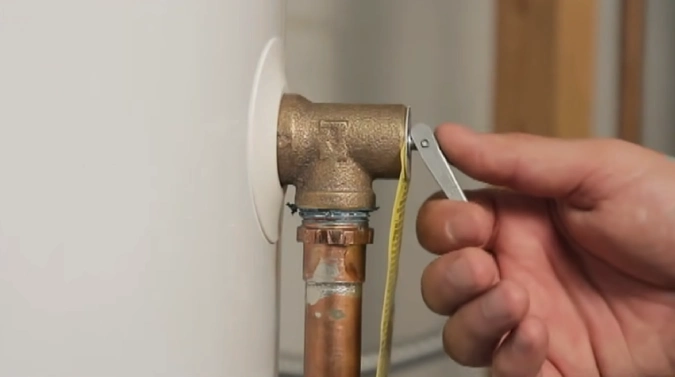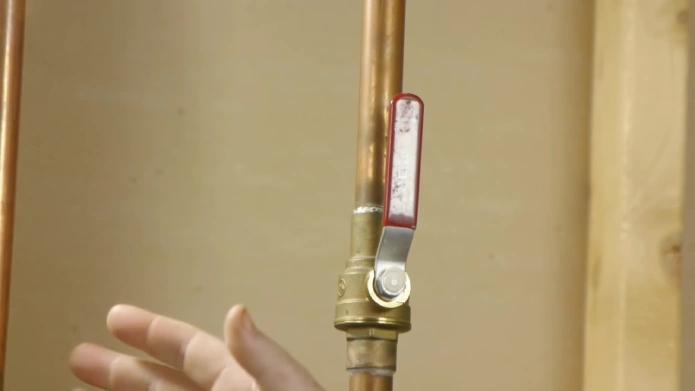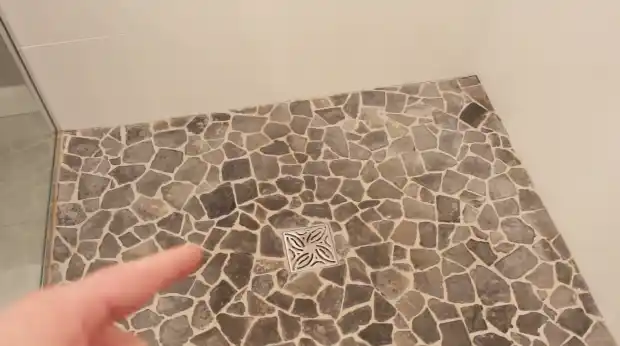Last Updated on June 13, 2023
You rely on your water heater daily to provide hot water for your daily needs. But there are times when your water heater relief valve may open, causing a sudden release of water. This can be a cause for concern, and you must understand the possible reasons for this occurrence.
Water heater relief valves can open for various reasons. High pressure or temperature within the tank is one common cause, as is normal water pressure expansion. A faulty or leaking pressure relief valve can also trigger the valve to open, as can excessive tank pressure.
Today, we will explore the possible causes of a water heater relief valve opening, how to spot a faulty one, and when to replace it. By understanding these factors, you can take steps to ensure your water heater is functioning properly and avoid any potential hazards.
What Causes a Water Heater Relief Valve to Open: Several Causes

If you’re wondering what causes a water heater relief valve to open, there are several possible reasons to consider. These include:
- High Pressure or Temperature
- High Water Temperature
- Faulty Relief Valve
- Leaking Pressure Relief Valve
- Faulty Internal Components
High Pressure or Temperature:
When pressure and temperature get too high in a water heater tank, the relief valve opens to release water and prevent damage or explosions.
Pressure can increase from a malfunctioning thermostat, faulty pressure regulator, or closed water supply valve. The relief valve opens when tank pressure exceeds the limit and releases water until it reaches a safe level.
Similarly, the relief valve opens due to high temperature caused by a thermostat set too high or a malfunctioning heating element. Regularly check pressure and temperature to prevent hazards.
High Water Temperature:
High water temperature is one of the main causes of a water heater relief valve opening. When the water temperature exceeds the maximum temperature rating of the relief valve, it releases water to prevent the tank from exploding.
Excessively high water temperature near the boiling point can cause the relief valve to open and release water. This can happen if there’s a malfunctioning thermostat or a faulty temperature and pressure relief valve.
Faulty Relief Valve:
If your relief valve is faulty, it can cause continuous leaking and may need to be replaced. The valve could be worn out, damaged, or blocked by mineral buildup.
This leaking can waste water, increase utility bills, and create other problems like corrosion and reduced efficiency. It can even be a safety hazard, causing pressure to build up and potentially causing the tank to burst.
Leaking Pressure Relief Valve:
If you see water around your water heater, there might be a leaking pressure relief valve. The valve aims to release extra pressure from the tank, so it won’t explode.
There are two possible causes of leaks: a defective seal or corrosion. If the valve isn’t working, pressure may build up to dangerous levels inside the tank. This pressure could rupture or burst the tank, leading to significant damage to your property or even injuries.
Excessive Tank Pressure:
Excessive tank pressure could cause your water heater’s pressure relief valve to leak. This occurs when the pressure inside the tank exceeds the ideal range of 40 to 80 psi, causing the valve to open and release the extra pressure.
Several factors can cause excessive tank pressure, such as a faulty pressure regulator or a closed water supply valve.
Also, a faulty thermostat or heating element can lead to overheating, causing the water to expand and exceed the tank’s capacity. This can lead to hazardous situations, including explosions or fires.
Faulty Internal Components:
Wear and tear on the internal components of your relief valve could cause leaks in your plumbing system. Faulty components can result from corrosion, rust, or high water pressure over time. Replacing the entire valve can solve this issue.
Is it normal for a water heater relief valve to open?

While occasional pressure release is normal, the frequent opening could signal bigger issues. The valve is designed to prevent over-pressuring due to high temperature or malfunctioning thermostats.
If it frequently opens, it could be due to a compromised valve or faulty water heater. Prompt action is critical, as this malfunction poses safety risks.
Consider lowering your heater temperature or calling a professional inspector to assess the T&P valve and heater. Failure to act could result in severe damage and harm to your home and its occupants.
What causes the pressure valve to pop on a hot water heater?
When a hot water tank builds up excessive pressure, it can be hazardous to those around it. That’s why pressure relief valves are installed to prevent this scenario. These valves will open and release pressure when the tank exceeds its limit.
There are multiple causes of relief valves popping open, such as a faulty thermostat or sediment buildup in the tank. It’s vital to address these issues immediately to avoid potential safety risks.
Is it normal for water to come out of the pressure relief valve?

It’s not normal for water to escape from the pressure relief valve. The valve should only release pressure to prevent danger. If water is coming out of the valve, it could indicate a problem with the valve or the tank. A faulty valve may not be closing properly, leading to continuous water leakage.
Alternatively, the tank could be over-pressurized, causing the valve to open too frequently. If you observe water leaking from the valve, it’s essential to contact a professional for help as soon as possible. Ignoring the issue may damage your hot water tank and jeopardize your safety.
How do you know if your water heater relief valve is bad?
If you’ve noticed water coming out of your pressure relief valve, it’s important to understand that this is normal. But if you suspect your water heater relief valve is bad, there are a few signs to look out for.
Firstly, if you notice water leaking from the valve, it indicates something is wrong. It could be that the valve isn’t functioning properly or due to a build-up of sediment or minerals within the valve.
Secondly, if you notice a decrease in the amount of hot water available or strange noises coming from your water heater, the relief valve may not be working.
What may happen if the relief valve is clogged?
You need to be aware that a clogged relief valve can result in a dangerous explosion known as a BLEVE EXPLOSION. When a relief valve becomes clogged, it can’t open when it should.
This means the pressure inside the water heater tank can continue rising, leading to a potentially catastrophic explosion. A BLEVE explosion occurs when the pressure inside the tank becomes so great that the tank ruptures and releases all the contents simultaneously.
This can result in a massive explosion that can cause significant property damage and even lead to loss of life. Due to this, you should make sure that your water heater relief valve is functioning correctly and that it isn’t clogged or obstructed.
How often do pressure relief valves need to be replaced?

Pressure relief valves should be replaced every three to five years to avoid dangerous consequences. Malfunctions or failures can occur due to corrosion or wear over time. This can lead to high-pressure build-up that can cause leaks, ruptures, or even explosions in the water heater.
Hire a professional plumber to inspect and replace the valve regularly. A qualified plumber can detect any wear or damage before it becomes a hazard. Also, sediment build-up can clog the relief valve and cause it to open unnecessarily.
Routine maintenance and flushing of your water heater are necessary to prevent this. Taking these steps can prevent costly and hazardous situations.
Protect Your Home: Find Out Why Water Heater Relief Valves Keep Opening
As a responsible homeowner, you should understand what causes a water heater relief valve to open. Several reasons could lead to this occurrence, such as high pressure, high temperature, faulty valve, or clogged valve.
But, if your relief valve is frequently opening, it’s not normal and requires prompt attention. Regular maintenance and proper checks can prevent your relief valve from opening and save you from potential damage to your property and water heater.
Remember, a faulty relief valve can cause serious damage to your water heater and your property. So, be vigilant and proactive in caring for your water heater relief valve.



